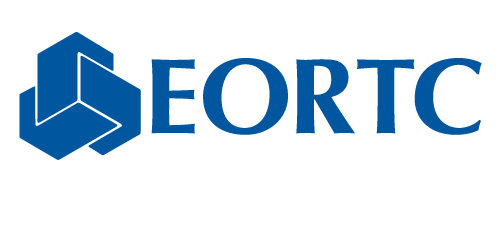EORTC colorectal cancer study shows surgery combined with FOLFOX4 improves progression-free survival
4 Jun 2012
An EORTC study coordinated by Prof. Bernard Nordlinger of the Hôpital Ambroise Paré has shown that perioperative chemotherapy with FOLFOX4 improves progression-free survival as compared to surgery alone but did not demonstrate a significant improvement in overall survival. EORTC trial 40983 evaluated the benefit of combining chemotherapy with surgery for patients with liver only metastases from colorectal cancers which, based upon pre-operative imaging, were considered to be resectable.
EORTC trial 40983 was a randomized phase III intergroup trial involving the European Organisation for Research and Treatment of Cancer (EORTC), Cancer Research UK (CR UK), Arbeitsgruppe Lebermetastasen und -tumoren in der Chirurgischen Arbeitsgemeinschaft Onkologie (ALMCAO), Australasian Gastro-Intestinal Trials Group (AGITG), Nordic Group, and Fondation Française de Cancérologie Digestive (FFCD).
Surgical resection is currently the only reliable treatment offering long term survival of approximately 25-30% for these patients. Survival rates for non-resectable colorectal cancer liver metastasis are low; a meta-analysis of studies of patients with colorectal cancer liver metastasis who received FU/LV chemotherapy showed a median survival of just 12.7 months.
Between September 2000 and July 2004, 364 patients with up to four liver metastases from colorectal cancer were randomized between a FOLFOX4 arm and a Surgery Alone arm. 182 patients were randomized to each arm, of whom 171 were eligible and 152 underwent resection. In the perioperative FOLFOX4 arm, 171 patients received preoperative FOLFOX4 and 115 received postoperative FOLFOX4.
Overall survival results, the secondary endpoint, were obtained after a median follow-up of 8.5 years. (Progression-free survival results, the primary endpoint, were reported previously.) Observed median overall survival was higher for all randomized patients in the FOLFOX4 arm, 61 months, than in the Surgery Alone arm, 54 months, and was also higher for all eligible patients: 64 months in the FOLFOX4 arm and 55 months in the Surgery Alone arm.
For all randomized patients, the five year overall survival rate was 51.2% in the FOLFOX4 arm and 47.8% in the Surgery Alone arm, and for eligible patients these percentages were 52.4% and 48.3%, respectively. The difference in overall survival was not statistically significant between the two arms (HR=0.88, 95% CI 0.68-1.14, p=0.34) (all randomized).
After progression, further treatment with chemotherapy was administered to 75.6% (FOLFOX4 arm) and 90% (Surgery Alone arm) of the patients with cancer progression, and 53.7% (FOLFOX4 arm) and 50.0% (Surgery Alone arm) received repeat surgery.
At a median follow-up of 8.5 years, 221 deaths were reported representing 61 % of all randomized patients. In the FOLFOX4 arm 85 patients died because of cancer relapse, two from complications of surgery, 16 from other causes, and four due to unknown causes, while in the Surgery Alone arm, 99 patients died due to cancer relapse, two patients from complications of surgery, eleven patients from other causes, and two patients from unknown cause.
Overall survival was a secondary endpoint for which the trial was not fully powered.
About the EORTC
The EORTC is a unique organization – a vibrant example of the fact that academic science and research know no national boundaries. Established in 1962, the EORTC is a non-profit European research organization operating as an international association under Belgian law.
The EORTC currently links a network of more than 2,500 pre-clinical scientists and oncologists in more than 300 hospitals in over 30 countries. It encompasses all aspects of cancer research, from translational research and new drug development to large phase III clinical trials and meta-analyses.
The 170 members of the EORTC Headquarters staff handle some 6,000 new patients enrolled each year in cancer clinical trials, approximately 30 protocols that are permanently open to patient entry, over 50,000 patients who are in follow-up, and a database of more than 180,000 patients.
The ultimate goal of the EORTC is to improve the future of cancer therapy by developing new agents and innovative approaches and to test more effective treatment strategies using commercially available drugs, or surgery and radiotherapy.
John Bean
Related News
EORTC: Advancing research and treatment for rare cancers
29 Feb 2024
EORTC Fellowship Programme: celebrating more than 20 years of impactful collaboration
22 Feb 2024
Appointment of Malte Peters as EORTC Strategic Alliance Officer
9 Feb 2024
Unique series of workshops in partnership with the European Medicines Agency (EMA)
7 Feb 2024
EORTC launches a prominent clinical trial in older patients with locally advanced (LA) HNSCC (Head and Neck Squamous Cell Carcinoma)
14 Dec 2023
Seven IMMUcan abstracts selected for ESMO Immuno-Oncology Congress 2023
6 Dec 2023
EORTC Quality of Life measures integrated in CDISC
20 Nov 2023
EORTC and Immunocore are collaborating to launch the ATOM clinical trial of tebentafusp in Adjuvant Uveal Melanoma
7 Nov 2023
Treatment with decitabine resulted in a similar survival and fewer adverse events compared with conventional chemotherapy in older fit patients with acute myeloid leukaemia
31 Oct 2023
New results and forthcoming EORTC trials in rare cancers, lung, head and neck, and breast carcinomas presented at ESMO 2023
20 Oct 2023


